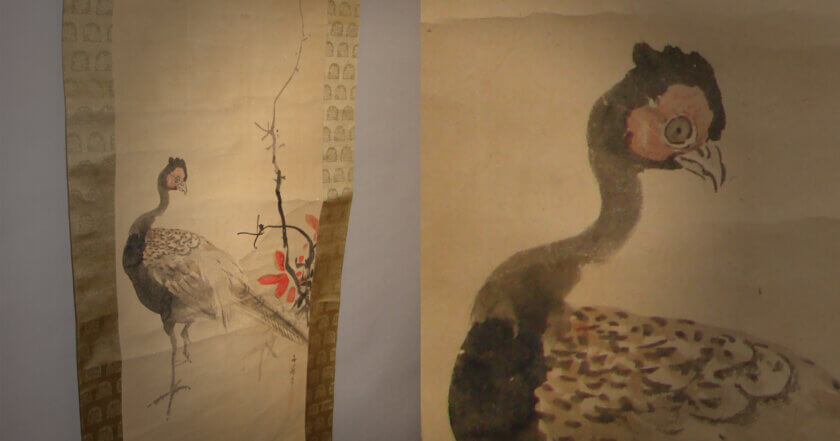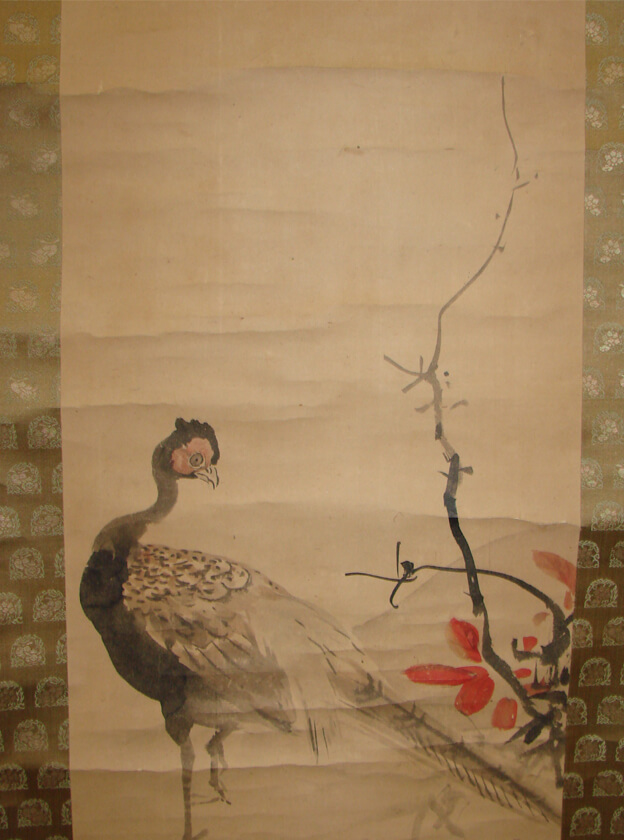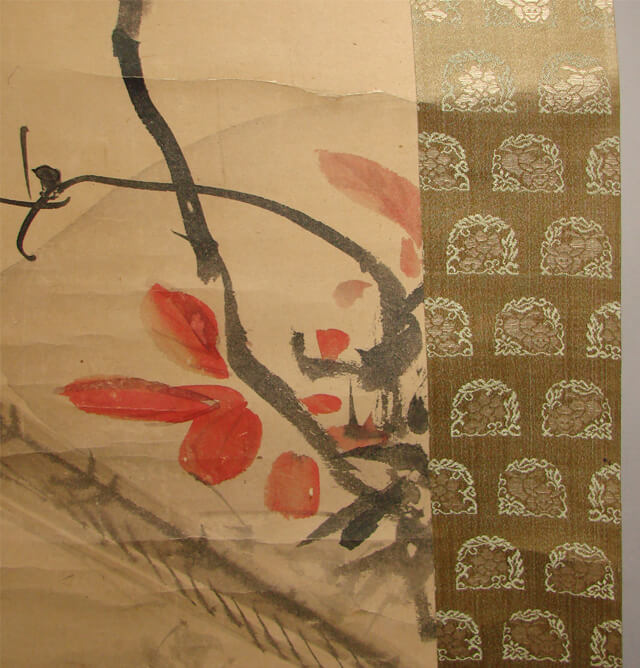Order of Repairing Kakejiku Hanging Scroll with Terrible Creases | Australia

Order of Repairing Kakejiku Hanging Scroll with Terrible Creases | Australia
The kakejiku is unrolled for display and rolled again for storage.
With this process repeated for so long, folds or creases inevitably occur to the kakejiku.
It is, therefore, necessary to remount the kakejiku every 50-100 years to turn it into the one without folds or creases which is suitable for display again.
In other words, the kakejiku is designed in its nature to require remounting.
We received the order of remounting kakejiku with creases from a customer living in Australia.
Following is the kakejiku to be remounted.

Extremely terrible folds occur to this kakejiku, in which a pheasant is seemingly drawn.

The following photograph is taken from an angle, highlighting the depth of those folds. If this kakejiku remains as it is without being remounted, the main work will start to tear from the part of these folds and will be eventually torn apart.
During the remounting process, each part of those terrible folds requires the work called ‘Orefuse’ to reinforce the part by applying long narrow Japanese paper from the back after Hada-urauchi (the first backing) is finished.

The red paint used in the main work was highly likely to be blurred when water would be added since the glue had been already weak.
Water is used to mount the kakejiku. Therefore, the work called ‘color fixing’ is necessary beforehand.

Detailed Consultation
As a result of the consultation with the customer about the details of remounting, the followings were determined:
Cleaning: As the extent of damage on the main work is so severe, we will clean it as best as we can.
Orefuse: Necessary
Mounting Style: Gyō-no-gyō
Finished size: Being left to us.
Fabric: As shown in the following photograph
Repair Process
The rough flow of remounting operation for this time is as follows:
Color Fixing (Settling the paint by applying chemical agent)
↓
Dismantling of Kakejiku (Removing old fabrics, roller rod, etc.)
↓
Removal of Old Backing Paper (Peeling off the old backing paper from the back of the main work)
↓
Cleaning (Cleaning the main work as best as possible by using chemical agent)
↓
Hada-urauchi (Applying the first backing paper on the back of the main work)
↓
Orefuse (Reinforcing by applying long narrow Japanese papers on the back of the first backing paper)
↓
Remounting (Remounting in kakejiku with the fabric which the customer has chosen)
Repair Work Was Completed.
The remounting of the kakejiku was finally completed after the long repair process.
Terrible holds which used to exist have been repaired excellently as the following photograph shows.
Now that many folds, which had interfered with the appreciation of the kakejiku, have disappeared, thereby making the pheasant stand out clearly, it is possible to thoroughly enjoy appreciating it.
Customer Feedback
As soon as the repair work was completed, we sent the kakejiku back to the customer in Australia, who later sent us the following words of appreciation regarding our remounting work:
Dear Mr. Nomura,
I couldn’t be happier with the results of the conservation treatment and remounting, it has improved immensely the enjoyment of owning such a marvelous work of Japanese art. Again many thanks for the your guidance and thank you to all the Art Nomura team.
We are also pleased to know that he is very satisfied with the result of our repair work.
Following is the photograph showing the repaired kakejiku hung on the wall:

We are always happy to see the kakejikus which we have produced being displayed at customers’ houses.
We are grateful to have received your request for repairing the kakejiku.
We have undertaken the repair of damaged kakejikus like the one we repaired this time. Please feel free to contact us if you have any inquiries.


